- Kirsten Coelho, Drill Hall, In The Falling Light, Courtesy Drill Hall ANU, 2015
- Kirsten Coelho, Bowl, Ink Bottle, Flagon, Bottle and Cup, porcelain matt white glaze, banded iron oxide, Bowl 12cm h x 29.8 cm diam, Bottle 17cm h x 8.8cm diam, Large bottle 23cm x 17cm, Bottle 24cm h x 8.5cm, Cup 9cm h x 9cm diam, 2015
- Kirsten Coelho, Low Bowl, Ginger Jar and Bottle, porcelain matt white glaze, banded iron oxide, saturated iron glaze, Low Bowl 4cm H x 20cm diam, Ginger Jar 21.5cm x 17cm diam, Bottle 27cm x 8.5cm diam, 2015
- Funnel, Bottle, Oil Can, Bowl, porcelain matt white glaze, banded iron oxide, Funnel 15.4cm H x 9.2cm diam, Bottle 27.5 cm H x 8.5cm diam, Oil can 25cm H x 11cm diam, Bowl 7cm H x 10.5 cm diam, 2015
Julie Ewington finds stillness at the heart of Kirsten Coelho’s centrifugal ceramics.
1
For all sorts of reasons, mostly to do with geography or serendipity (or the lack of it), I had never seen enough work by Kirsten Coelho. I’d encountered two or three pots at the homes of friends, occasional pieces in museums, but never enough to know it really well. Even a visit in early 2015 to Coelho’s studio, out in Adelaide’s northwest near the Port, left a feeling of unfinished business. The work was still on the periphery of my vision, persistent, but somehow elusive. I knew I hadn’t come to grips with it, not yet.
Then came In the Falling Light, Coelho’s solo exhibition in Canberra last July, at the ANU’s Drill Hall Gallery. I walked steadily around the walls of the room, taking my time, left to right, obedient to ingrained habit. Bottles and flasks and little white beakers and shallow lobed dishes were arranged on box-like shelves, rather like rudimentary kitchen cupboards, keeping the porcelains safely out of reach. Each shelf was entrancing – the variety of the individual vessels, the interplays between the forms, and the dialogues between the different whites and the occasional iron red glazes. I was struck by the collected dignity of the vessels. And then there was their utter perfection.
But it was the long table under the raking light from the window that stopped me short: its amplitude, and, on that generous expanse, standing quietly in the pale winter sunlight, the way the pots seemed only loosely connected. There was a largish lidded vessel that looked rather like a taller than usual ginger jar, a brace of related but subtly different flasks and bottles, a little beaker, a handsome wide dish with a warm saturated iron glaze, and then, at one end, a large straight-sided bowl that was like nothing I had ever seen before. At least not in an art gallery.
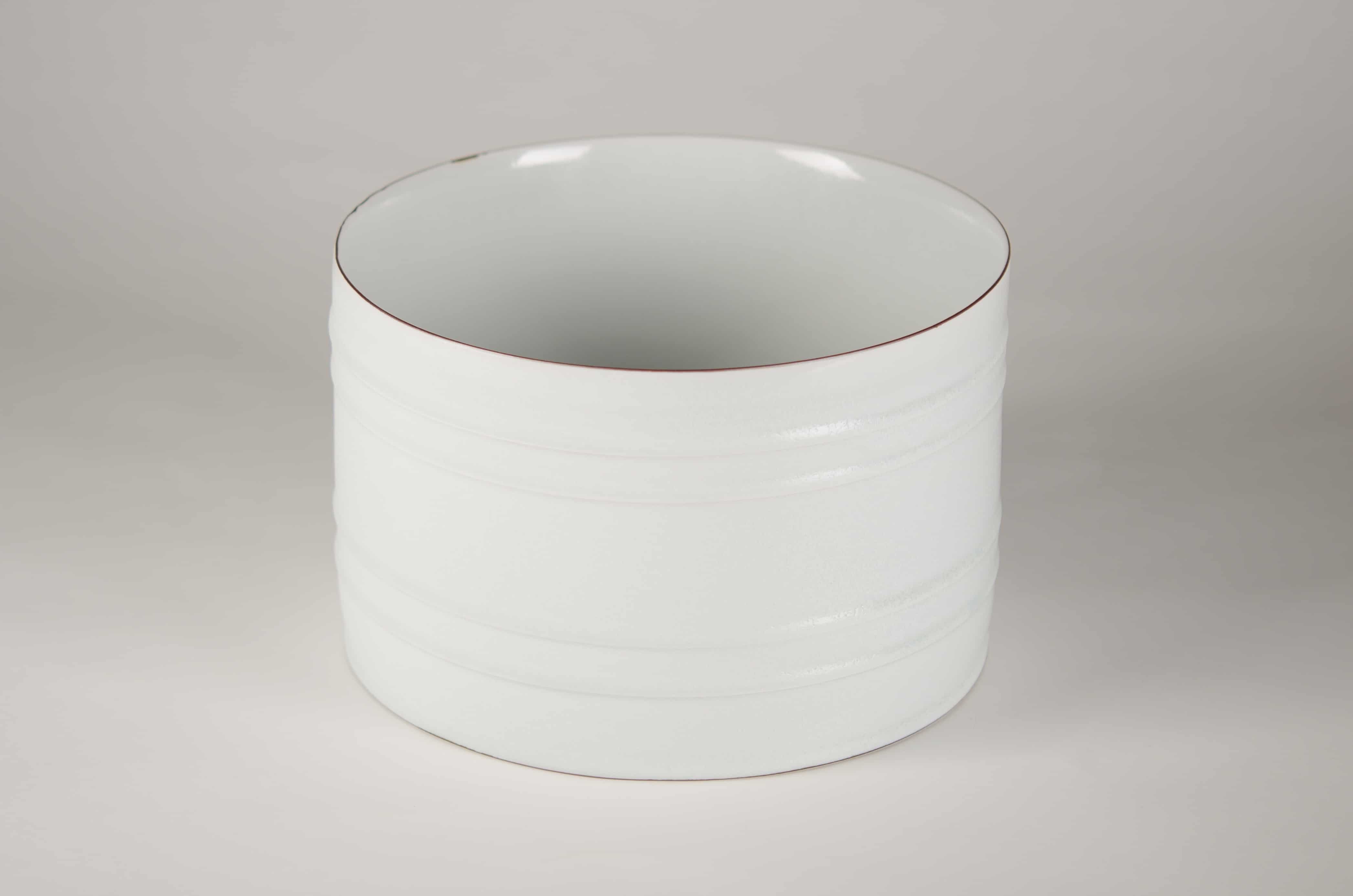
Kirsten Coelho, Large bowl, porcelain matt white/pale blue sheen glaze. banded iron oxide, approx. 17cm H x 27cm diam, 2015
Large bowl 2015 is probably the largest pot Coelho has ever made, a solid imposing thrown porcelain bowl; now I think about it, it’s not at all distant from an old tin washing-up dish. Where the flasks and bottles are elegant, graceful and swelling, evoking half-remembered narratives or past lives, Large bowl simply seems to be. It has an oddly uncompromising presence. Not that size is the only issue: I have seen far larger thrown bowls, but they have always announced their virtuosity by balancing on a narrower foot, their sides shooting sharp and diagonal.
Unlike these splendid prodigies, Large bowl is straightforward, unseductive. (Strangely for porcelain, pottery’s glamour-puss.) It is unadorned save for two pairs of bulging parallel bands around its circumference, precisely placed above and below the centre of the pot to emphasize its solidity. (My cellphone photos from July show additional banding, horizontal shadows made by the blinds on nearby windows.) When your eyes have adjusted to its gleaming pallor under the gallery lights, and if you are particularly attentive, you begin to see a sliding pale blue-ish glaze sheening over the interior, almost hovering above the surface, and then pooling slightly, tremulously, above the horizontal bands. Large bowl is ungainly, in a way, but exquisite. I found it astonishing.
What strikes me about Large bowl, about all Kirsten Coelho’s recent work in porcelain, is a quality of absolute stillness. Crisp, pristine and completely assured, these bowls, bottles, cups and canisters seem, somehow, to be a little removed from the world. Somehow apart. Despite generally being domestic in size and handling, with subtle glazes, they are perfectly inviolate. Yet these vessels are posed as well as poised, and almost always self-consciously beautiful, whether standing alone or in groups. (Large bowl is the exception that proves this rule: despite its great size, it does not make any obvious claim to beauty, at least not in a conventional sense.)
Perhaps it seems perverse, or at least stating the obvious, to speak about stillness in connection with ceramics. Doesn’t pottery always sit still, waiting on a shelf or in a cupboard or cabinet, cosseted until the moment of use, and then handled only with care? Especially pottery made from porcelain, the queen of clays: so much porcelain is either for ritual or decorative use, and very rarely handled. But while Kirsten Coelho’s porcelain vessels can certainly be used – indeed many are, and often, as her pots are invariably functional in form, I have a nagging feeling that this is not exactly the point, not here. Certainly not with Large bowl. Not moving, not being used, standing still: this is what I think matters.
But, in the immortal words of Professor Julius Sumner Miiller, why is it so?
2
To step back.
I said that Kirsten Coelho’s ceramics are always functional in form. She’s noted for her punctilious attention to the specific details of historical ceramics, and throughout her training in Adelaide, and during the 1990s in London, and ever since, Coelho has immersed herself in the history of her craft. London was crucial. The thing is, making pottery for functional use is alive and well in the UK. It’s a strong native tradition, with a huge market for contemporary makers, so it was a great place to begin working life, and to start the long daily labour of throwing and glazing. In the 1990s, when Coelho was working at her wheel and teaching pottery at the longstanding Clapham Arts Workshop in London’s southwest, she made large thrown and brightly-coloured painted stoneware and earthenware pots, which she sold at markets and fairs, and through the studio – cheerful assertive useful things, typical of those Memphis-inflected times.
Gradually, imperceptibly, colour receded. Coelho came to love the work of the great British practitioners, such as the late Lucie Rie and Joanna Constantinidis, and Richard Batterham, who were the inheritors of Bernard Leach’s twentieth century studio pottery tradition, and Edmund de Waal (who returned the compliment by including her work in his massive The Pot Book in 2011). England is important for Coelho: she still shows there regularly, and as Adelaide potter Damon Moon observed as long ago as 2006, ‘there is a sensibility about her work that is very English’. Coelho’s favourite porcelain clay was developed by the late David Leach, Bernard’s son, though she also loves Limoges porcelain from central France, and about three years ago started using Les Blakebrough’s Southern Ice, from Tasmania. Tellingly, Moon insisted on calling Coelho a ‘studio potter’, rather than a ‘ceramic artist’, seeing in her pots the attentiveness and lack of pretension that characterises the British tradition. With few exceptions, this British work was functional, meant for use in the home.
Domestic life and its pots aside, Bernard Leach’s name always summons the long brilliant practices of ceramics in East Asian countries that inspired him, and subsequent generations of British and Australian studio potters. Japan was Leach’s inspiration, especially at first, though he later travelled to China; conversely, Chinese Sung dynasty and Chosun Korea porcelains were Coelho’s starting point, though she did spend several months in Japan in 2014. If Leach was indebted to both William Morris’s philosophy of Arts and Crafts and to Asian ceramics, Coelho is equally beholden to both lineages, but at several kinds of useful distances. Time and geography inflect her affiliations: Coelho is indisputably Australian in her work, in her sources. When she returned from the UK, thinking about vessels used here, she looked to local evidence, initially in colonial paintings and illustrations, especially particular John Longstaff’s Breaking the News 1887 and Frederick McCubbin’s Kitchen at the Old King Street Bakery 1884 and Home Again 1884, precious testaments to domestic life, past lives. (These have surfaced in her work in recent years, such as her collaboration with Adelaide embroiderer Sera Waters in 2011, and the distinctly domestic setting of her winning work for the Sidney Myer Ceramic Award in 2012.)
So while her lovely practical pots speak to the reiterated pleasures of daily life that were honoured by Leach, and her luscious thick white glazes recall the other-worldly perfection of Korean ceramics, the pared back simplicity of Coelho’s pots seems entirely Australian in its idiom. (You might sum it up as Bernard Leach’s studio + London museums + the Australian shed). No decoration, no frills, just the undecorated forms and their glazes. Sort of no bullshit.
This is a situated practice, then. After returning to Australia in 1999, Coelho learned again how to be a potter here, with all the complexities of contemporary Australian life thrown into the raw clay. She had always been committed to this life of making. But now this was not merely about sustainability, in the economic sense, or even about the social placement of her pots – where were they used, where did they end up, on tables or in museums? It was, rather, what meanings might these things made here have, now, in Australia. What happens with pottery here? How can we think it, and think through it? It’s a matter of content.
And there’s a great deal more to this than meets the eye. Coelho has borrowed many mundane objects for her splendidly literate work, most of them Australian. Her research has been both painstaking and pleasurable: she revels in the sheer variety of antiquated oddities thrown up by the crowded past, and her pots are informed by all sorts of leftovers from the past: canister, any number; a tobacco jar seen at the Museum of Australian Pottery at Holbrook in country New South Wales, now reconfigured as that unusually tall ginger jar; boxes and jars and, importantly, odds and sods that were never made in clay; a particularly hilarious series of spouted bottles, including a German refill petrol bottle seen in The Museum of Things in Berlin, with a teensy-weensy spout that gives away its origin in metal.
This means that Coelho has made, over recent years, a gradually wider range of forms and vessels, with a far greater range of historical prototypes and references. The standard Anglo-Japanese repertoire is still there, like the small bowls, and there are Sung-style lobed dishes, but others are not at all familiar. From 2006 onwards there is what looks like a multi-tiered stack, rather like an Indian tiffin box, and from 2007 a wide flat-bottomed bowl, hugging the table-top awkwardly, and in 2008 a bottle with a comical little loop of a handle, far too slender to be functional in its ceramic manifestation. There’s the clue, once more, if we know how to look. Coelho concentrates on the quiddity of her prototype vessels, so even when she transmutes them into porcelain, and puts different cups and bowls and bottles together with them, something of their original life remains.
I’m looking at a photograph taken at the Canberra exhibition: a number of different vessels are placed more or less alongside each other, and deliberately so. But they seem to stand a little apart, they seem a tad gawky. These are not ensembles or suites of ceramics, in the end: each object remains stubbornly individual, inviolate. (There’s that word again.)
I’m fascinated by how Coelho’s vessels do often seem to be alone, even when standing next to their fellows. Unlike the larger groups of related vessels arrayed in the late Gywn Hanssen Pigott’s ‘trails’, which always cluster together, Coelho groups dissimilar things, often markedly so: despite their separate displays of patience, one cannot see what collective action they might await. They simply are, in their particularity. One clear exception is a loose family of quirky spouted bottles, often posed next to little dishes to catch the drips – a nice nod to practicality. And one recent group includes a bottle, a funnel, a spouted bottle and the drip-catching dish, so some sort of functional relationships can be constructed. But this is rare. Most groups suggest a more or less random aggregation of items on a shelf. As if we had happened across these pots on a pantry shelf, waiting for the uses that will animate them.
This is the language of the kitchen and store cupboard, sometimes the sideboard, but never the front parlour, or the display cabinet. This is the vocabulary of the working home.
3
Where have we seen these sorts of pristine bottles, jugs and flagons before? In pictures: in European medieval and early Renaissance paintings of the Annunciation by the Angel Gabriel to the Virgin Mary, as one of the pictorial emblems of her inviolable goodness – a jug or a flask of water always accompanies her. Mary’s purity is expressed through womanly accomplishment in the home, through domestic virtue and good order. All Coelho’s work is serene in this way; it speaks of a house where everything is in its accustomed place, where thought and meditation can thrive.
Large Bowl did begin with purity and order, as it happens, but much closer to home, with washing in its modern manifestation as mechanized hygiene. That is the source of its curiously un-ceramic shape: it started life as a metal drum inside a superannuated washing machine. Coelho’s seen a lot of them; she prospects in rural rubbish dumps and in country town museums, repositories of past lives and lost memories. Gulgong Pioneers Museum in country New South Wales was a happy hunting ground, lots of photos for the archive there, and Ballarat’s Sovereign Hill, a childhood haunt. And Tailem Town at Tailem Bend, on the Murray in South Australia, with its old farming equipment and domestic machinery, ‘even a history of barbed wire display’ says Coelho, ‘(which is beautiful in itself, actually)’.
Large Bowl is an amalgamation of several of these washing-machine drums. (My absolute favourite in this esoteric field would be the green 1930s Breville washing-machine in the collection of Sydney’s Powerhouse Museum. It was once some woman’s dream.) But all that is gone. Once, these metal drums from antiquated washing-machines were the fast-spinning components of what is perhaps the canonical modern domestic appliance, but now I think what they do is testify to the speed of our forgetting. It’s at least as fast as the drum’s own turning. For we have lost sight, I think, of how recently automated washing-machines became standard operating equipment in Australian homes, relieving women of the Monday drudgery of washing day. Old laundries, old washing days. I do remember the pre-automated Australian laundry in the suburbs: a cold dank dark room in Pymble, outside the main house, the boiling copper and its horrid greasy steam, the terrifying mangle that Mum warned us kids about every single wash-day, later the awkward twin-tub and the ungovernable sliding weight of wet sheets.
Today all that arduous wash-day labour is hidden inside a standard white enamel box. Because of the washing machine’s construction, its drum is the invisible and almost silent servant of domestic order. (One might say it is the perfect servant…) But back in the day, these metal tubs were noisy, and washing machine drums that are unbalanced still do make a racket. Metal vessels bang on, then, whereas Kirsten Coelho’s porcelain vessel speaks in another way altogether.
Following in Coelho’s footsteps, trying to see where Large bowl came from, I went prospecting for old laundry equipment, as writers do, on the web. My best find is a wonderful photograph taken around 1910 at Merrigum near Shepparton by Lilian Louisa Pitts, now held in Museum Victoria. It shows two little girls in a garden playing with a comically cumbersome washing machine – one has shoehorned herself into its bowl, the other tears up in frustrated jealousy. Of course: vessels are for hiding in, for hiding secrets, for entering the unknown. Not that we can climb into one of these washing machine drums now. But we would have, when we were children, when we were small but our dreams unbounded, if we’d stumbled across one in a weedy abandoned backyard.
I can still enter the washing machine drum in my imagination, though. Coelho has already taken me there. There is always that lurking temptation to anthropomorphise vessels, but, in truth, Coelho’s vessels are not like us. They are things we use, for practical reasons, things we peer into. But they are also things we pour ourselves into, in imagination. Vessels act as receptacles, not only for past histories and memories, but for our own present selves.
What does this rugged antiquated domesticity have to do with porcelain, though? There is a connection: industrially-manufactured enamels on cast iron were often described as ‘porcelain’, because their surfaces are vitrified. Enamel and porcelain share the labour, and the fire. And in her vessels Coelho reveals, so delicately that one almost drifts unheeding past the point, that enamelled cast iron and porcelain are ‘sisters under the skin’, to borrow Kipling’s pairing of ‘the Colonel’s Lady an ‘Judy O’Grady’.
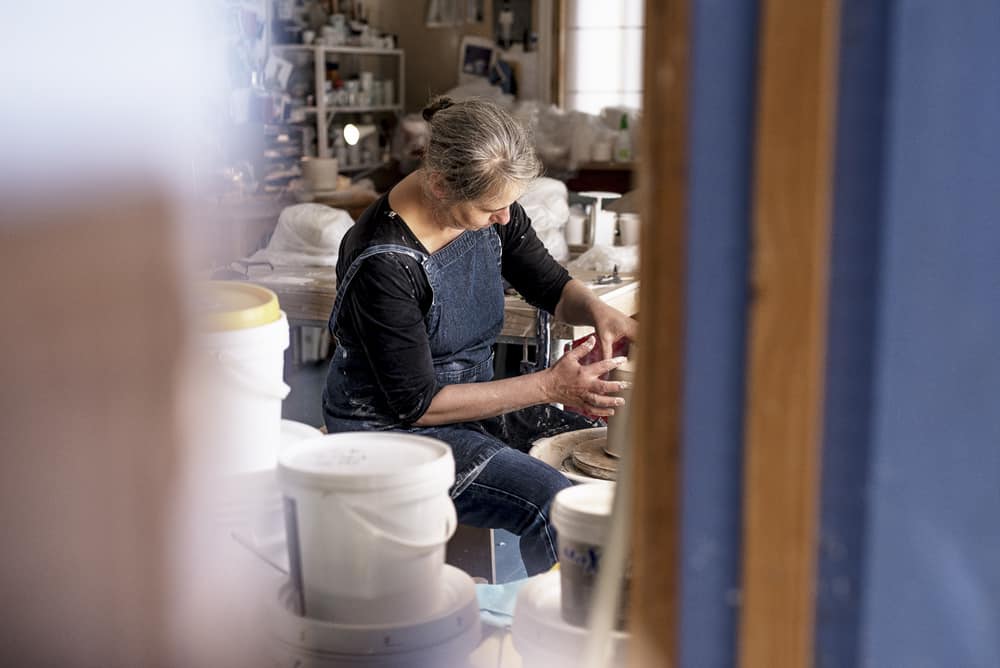
4
Dirt plus minerals plus fire = pottery. Which brings me back to the studio, industry of another kind, to the hard physical work of being a potter, and the enormous amount of energy that must be expended in making even a small pot.
I’ve insisted that Coelho’s work has an air of restraint, almost of meditation, that her vessels are completely still, and that’s true. But what I also see, oddly enough, when I look at the pots, is all the vigorous physical activity that brought them into being: lumping the clay into the studio, the pounding and the pumping of the pugmill, wedging it and pummelling it into the right consistency. Then the potter faces the turning wheel, keeping pace with it, mastering its implacable centrifugal force. The combination of speed and precision when throwing pots is dazzling. There’s more: every day, the incessant scraping, finishing, burnishing. Heaving the pots of glaze – it’s metal, it’s heavy – and mixing glazes, volumes of glaze. The glazing itself, carefully, painstakingly. Then stacking and firing of the kiln, then unstacking it again. Over and over again. It’s back-breaking unremitting dirty work.
Kirsten Coelho does all of this, for every one of her pristine pots. She works solo in the studio, with no assistants, enjoying the strenuous work by the many exacting processes making pottery requires. And she wants to do this herself, she says: ‘I like to know each part of the process, I enjoy doing it all myself…”More, she misses the physicality of her studio work when she is travelling, researching. It is a practice, in both senses, or a praxis, as the Germans more accurately say, a word incorporating action, and custom, and repetition.
After the potter’s bodily energy, comes the furnace. Firing the kiln is the magical part of the entire operation: when mud turns into beauty. Only a ferocious fire can translate mute clay into ringing ceramic. And this is porcelain, fired to between 1200-1400 Celsius. Adelaide’s Mediterranean climate is hot and dry, and this El Niño summer it will be scorching; Coelho won’t fire up her gas kiln on the hottest days. It’s not only unbearable, it ‘feels dangerous’, she says. Porcelain is, after centuries of experimentation, still an extraordinarily chancy business. It’s agonizing: each glaze firing takes around 14 hours, and then the kiln must cool for two entire days before it can be opened and the damage assessed, and delight registered: Coelho says she has to throw out about half of what she fires, because of the unpredictability of the firing process. (Edmund de Waal’s The White Road, which follows the porcelain trail through history, and has much to say about experimental firings, is one of this summer’s mandatory holiday reads.)
Coelho has come to an interesting place with her firings, she says: she ‘now feels that it’s good to go with what happens in the kiln…’ Because each firing is to an extent unpredictable, even ungovernable, and out of this transmutation, happening out of sight as the fire has its way with the clay behind the kiln door. No matter how precise the procedures, and Coelho is both fastidious and highly experienced, you never really do know entirely what to expect when the kiln door is finally opened.
Beauty comes out of the unexpected. But not out of nothing.
5
What I‘m seeing now is how simple vessels – unadorned, modest, unpretentious – are coaxed to manifest complex histories and ideas, through their own substance.
Let’s start with what looks like rust. One of Kirsten Coelho’s trademarks is that fine barely breathed on touch of iron oxide applied to matte white porcelain, sometimes a very fine band around the rim of a vessel. Rust? On porcelain? Coelho pulls us up with this anomaly. On the face of it, these iron oxide marks mimic rusting on old metal kitchenware, inevitable wear marking the passing of time, and the impact of affection. (Nothing will persuade me to give up my aunt’s old enamelled saucepans, however chipped.)
Now we have to look again, see anew. Enamel and porcelain, rust and iron oxide. Iron oxide is red: the colour of Australian desert dirt, the sometimes source of our wealth. (Stephen Bowers, Adelaide dweller and fellow ceramicist, speaks about the ‘iron in the soul’ of Coelho’s iron saturated temmoku glaze.)
The first encounter with Coelho’s ‘rusted’ pots prompts startled delight: what we take at first glance to be battered enamel jugs and bowls—rather ordinary things, even obsolete—turn out to be fine porcelain. Is this precious elegant substance, used for upstairs occasional social rituals, masking the more mundane routines of the downstairs daily kitchen? Is it claiming sisterhood? It seems to be a ruse, a charming conceit. But it’s so much more. Coelho’s flirting with porcelain and enamel is certainly matching what are usually thought of as diametrically opposed – the rough with the smooth, the mundane with the precious, the vernacular vessel with the refined treasure. Even more satisfactory, she is conjuring a new relationship out of substances that are, in fact, very closely related. Enamel and porcelain are both tough, durable, impermeable surfaces, extremely effective in their specific capacities because of being vitrified, and highly valued for them.
More than that, this is a conversation between glazes. And this is where it gets really interesting. The addition of the iron oxide to the celadon glazes that Coelho uses is a very pointed interruption into that perfect luscious matte surface. A celadon glaze is already the result of the transformation of iron oxide from ferric to ferrous iron during the firing, so these added touches of iron oxide is iron speaking to iron, on the surface of the pot. Potters will have immediately cottoned on to this, of course, but we mere mortals need this spelled out.
Other glazes talk to each other. Coelho uses thick white matte glaze because she feels it ‘accentuates the silhouette of the form’, but, paradoxically, her ‘favourite time’ is when the matte glaze is almost becoming ‘sheeny’: as the glaze gets hotter in the kiln, the applied iron melts and embeds into the porcelain: ‘When there is more of a sheen on one side, it’s because the flames have met the vessel, that’s when you get the thick roll of celadon at the base’. And Coelho loves the generous use of material. This may be porcelain, but it is robust.
I spoke of Coelho’s pots being unadorned, and that’s true, too, for the robust simple shapes of the vessels: they are always pared back, almost strangely so. But Coelho’s interested not only in the innards of old machines, nor even their original functions. She’s drawn to the drum shape as, she says, ‘an object in itself’, which she often sees ‘in the urban and domestic landscape…be it silos, washing machine drums, storage containers, old fridges …’ In 2012 a large pot started with metal rollers used in road-making, and earlier ridged pots were based on industrial chimneys: ‘… on the corner of Churchill Road and Grand Junction Road…not too far from my house…I can see them when I drive along Grand Junction Road and they loom large…in the distance. They are where my captivation with that form began.’ So Coelho really loves cylinders. Solid forms. Without handles.
I remember at this point that Georg Simmel, the maverick early twentieth-century German sociologist, wrote an enchanting little essay in 1911 titled ‘The handle’. Handles do matter, and Simmel looked at them because they are the precise point where humans interact with vessels. But there are very few handles, or knobs for that matter, on Coelho’s recent pots. She did make a brace of mugs taking off from old enamel tea-mugs, enjoying the challenge of making good handles; and the petrol bottle has a dinky looping handle, but so delicate it’s a visual joke. She says she leaves the knobs off so her vessels are not literal recreations of historical prototypes. Use is suggested, rather than recapitulated; past uses can be construed, but none is prescribed. This means there is nothing to distract from the potential of the surface, which becomes, as Coelho sees it, like a kind of ‘painting’ … one made in the moment, and by chance, to a degree, in the best gestural traditions.
In her forms, in her glazes, Coelho is taking on the urban landscape, where she lives. This regard is tender: what she knows, she loves, and that is where her work lives. No cranes or pines or even falling water for her (not in South Australia, that’s for sure). Making the industrial personal, Coelho brings it inside for contemplation. It’s a nice counter-point to the usual domestic purposes of pots. In 1973 the Mexican poet Octavio Paz, perhaps unsettled by living in the midst of modern American mass production, wrote ‘Use and contemplation’, a marvellous essay about the pleasure of hand-made things. Unlike art, which he says is made for looking at, a crafted thing is not ‘Not an object to contemplate: an object to use… a physical presence which enters us by way of the senses and in which the principle of maximum utility is continually violated in favour of tradition, imagination, and even sheer caprice….there is a constant shifting back and forth between usefulness and beauty. This continual exchange has a name: pleasure.’ Coelho is doing precisely what Paz celebrated, in a way he might not have anticipated: she looks at industrial artefacts, through her own hand-making.
Now, fired up by these large anachronisms, marked by time’s rust, Coelho wants to make larger vessels: they give her room for what she calls her ‘abstractions’. These generous expanses allow glazes to play, to slip and slide and begin to make their own ways on the surfaces of the pots. This is what Coelho always calls abstraction, invoking the language of painting, and it’s clear from our conversations that she does mean this in the art historical sense: avoiding representation in both the forms of the pots and in their glazing, always seeking what is allusive rather than direct. In 2014, in a text for an exhibition in the UK, Coelho wrote ‘…the unlikely abstractions found in the weathering of iron in the urban landscape; the rust around a car window and the rivulets of iron on factory chimneys for example; I am exploring the convergence of object and surface; the merging of the formal and the abstract…’
Everything here is oblique, however, deliberately so. The vessels are not quite what they seem, and neither are the glazes. There is slippage – physically, in the downward movements of the glazes, which pull other colours down with them. (Coelho points out that a handle would be an interruption to the flow.) This slippage is metaphorical, too: as if, with minute but sure disturbances of our expectations, Coelho makes her pots swerve away from capture at the last minute.
‘At the still point of the turning world’, wrote TS Eliot in Burnt Norton in 1936:
At the still point of the turning world. Neither flesh nor fleshless;
Neither from nor towards; at the still point, there the dance is,
But neither arrest nor movement.
Here he was thinking of the Christian God, but I can’t help thinking of Shiva, the Lord of the Dance, and therefore of destruction and creation, and so, too, of the constant turning of the potters’ wheel.
6
I asked Kirsten Coelho about the title of the Canberra exhibition – In the Falling Light. The phrase has a certain lyrical tone, in a minor key; it’s the ghost of ‘a downward sigh’, in her words. Is it a song title? From a poem? Coelho tells me it’s her own line, prompted by a visit to the Drill Hall months before, while she was preparing the show, and the revelation of the beautiful light in that room. Opening the exhibition, the late Andrew Sayers noted ‘how right these pieces are for a Canberra winter where the light is bright with reflected snow and the landscape pale as limestone. There’s a kind of rarefied quality, a reserve in her work that matches my memory picture of Canberra. Light is Canberra’s greatest triumph.’ Light moves, of course, as the world turns, and Coelho’s ‘falling’ light suggests that things must change; unusually, in these hard-bitten times, she‘s not afraid of ‘a sense of nostalgia, things beginning and ending…looking backwards into our own past, or into the historical past…’
This gentle meditation owes something to the restrained and serene paintings of interiors by the Dane Vilhelm Hammershøi (1864-1916). An astute friend sent her the invitation card from London of the Royal Academy’s 2008 exhibition, a painting showing a woman playing a harpsichord in the clear northern light at the opening of the Danish twentieth century. Coelho has it in her studio still. She finally saw Hammershøi’s paintings in 2013, when she visited Copenhagen, where, as chance had it, she was born. Many picture women in domestic interiors, in gentle pale sober spaces, but more than that, there is space in these paintings for another kind of abstraction altogether – reverie, dreaming, thinking slowly, and deeply, and being immersed in just one moment. Being still.
It was Edmund de Waal who noted that Coelho’s ceramics were ‘free of all traces of making marks’ but, again, I think that Large bowl is the exception that proves this rule: those horizontal bands deliberately call attention to the circular movement of the wheel that brought forth this pot, not once but twice. It’s as if these bands are now marking time, the time that the vessel once spent turning on the wheel, and the time we are spending now, walking around it. It’s as if everything else revolves around Large bowl. And it’s a paradox.
That’s how I feel now. I thought, when I first decided to dive deeper into Kirsten Coelho’s pots, that I would find out more about the ways they inhabit domestic life. Instead, I found the door opened to the world outside, and the dusty baking heat of long flat Adelaide roads. I thought I’d learn about celadon, but found its tin sister. I imagined picking up the pots, but now realise that they want to be left alone. I believed I was exploring tranquility, only to discover hard gruelling work, and that much, much more lies in and around and behind the achievement of perfect serenity. So I’ve shifted. Even if that movement, too, is only momentary.
Further reading
Stephen Bowers, ‘Iron in the soul’, Ceramic Review (UK), May/June 2008, pp.30-33.
TS Eliot, ‘Burnt Norton’, Four Quartets, Faber, 1944.
Alison Holland, 2012 Sidney Myer Fund Australian Ceramic Award 2012, Shepparton Art Museum, 2012, pp.10–11. (Also at http://thisisnofantasy.com/Kirsten-Coelho)
Rudyard Kipling, ‘The Ladies’, in Rudyard Kiplings’s Verse, Doubleday, Page & Company,1922.
Damon Moon, ‘Kirsten Coelho’, Journal of Australian Ceramics, 45/1: April 2006, p.15-16
Octavio Paz, ‘Use and contemplation’, (translated Helen R Lane) in Ronald Larsen, A Potter’s Companion: Imagination, Originality and Craft, Park Street Press S, 1992, pp.113-122.
George Simmel, ‘Two essays: The handle’ and ‘The ruin’, Hudson Review, 11.3, Autumn, 1958, p. 371ff. Originally published 1911.
Edmund de Waal, The White Road: a Pilgrimage of Sorts, Chatto and Windus, 2015.
Edmund de Waal, The Pot Book, Phaidon, 2011.
Wendy Walker, ‘Prospect’, Helen Gory Galerie, Melbourne, 2012
Further inspiration
- Bottles outside Kirsten’s studio
- Washing machine drum
- Adelaide chimney
- Adelaide chimney
Author
 Julie Ewington is now living and working independently in Sydney, after over 17 years in Brisbane at QAGOMA. In this altered state she has taken on a variety of new projects: writing essays for catalogues and journals, reviewing exhibitions both in Australia and internationally for magazines including The Monthly and Artforum, lecturing, and, for the summer of 2016-17, curating a retrospective of sculpture by the late Bronwyn Oliver for TarraWarra Museum of Art.
Julie Ewington is now living and working independently in Sydney, after over 17 years in Brisbane at QAGOMA. In this altered state she has taken on a variety of new projects: writing essays for catalogues and journals, reviewing exhibitions both in Australia and internationally for magazines including The Monthly and Artforum, lecturing, and, for the summer of 2016-17, curating a retrospective of sculpture by the late Bronwyn Oliver for TarraWarra Museum of Art.




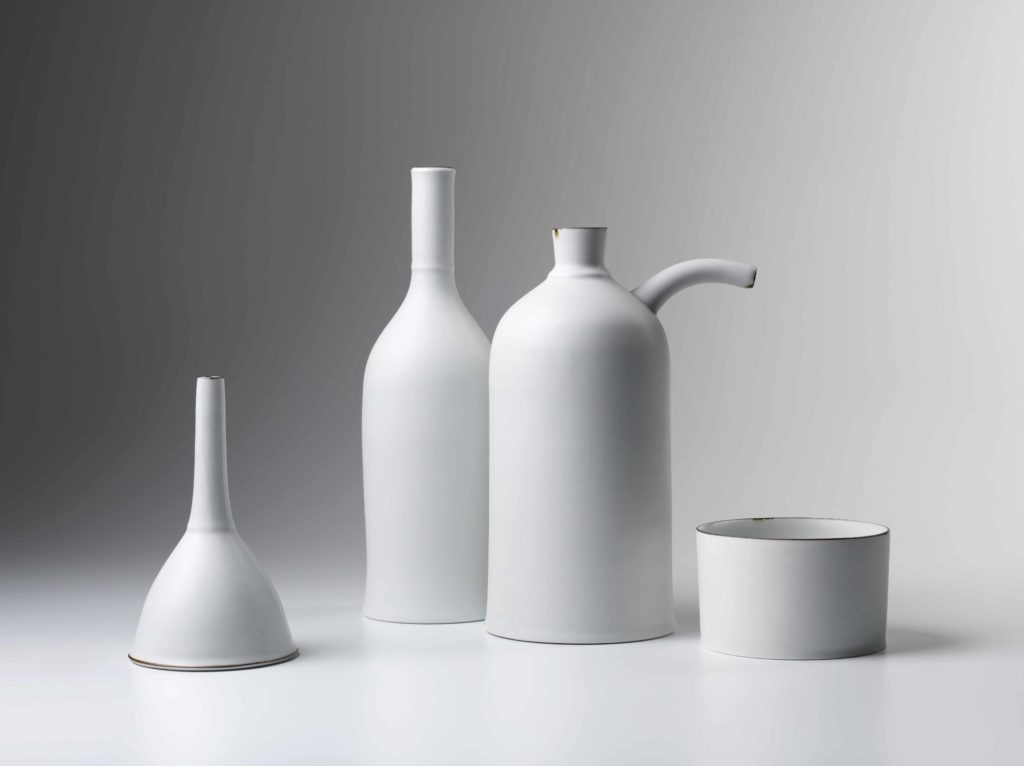


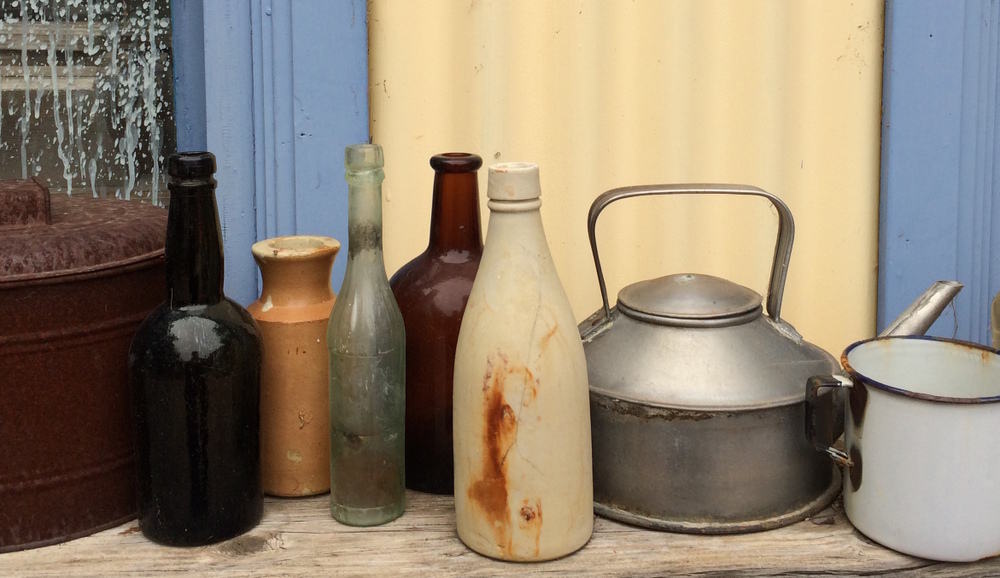

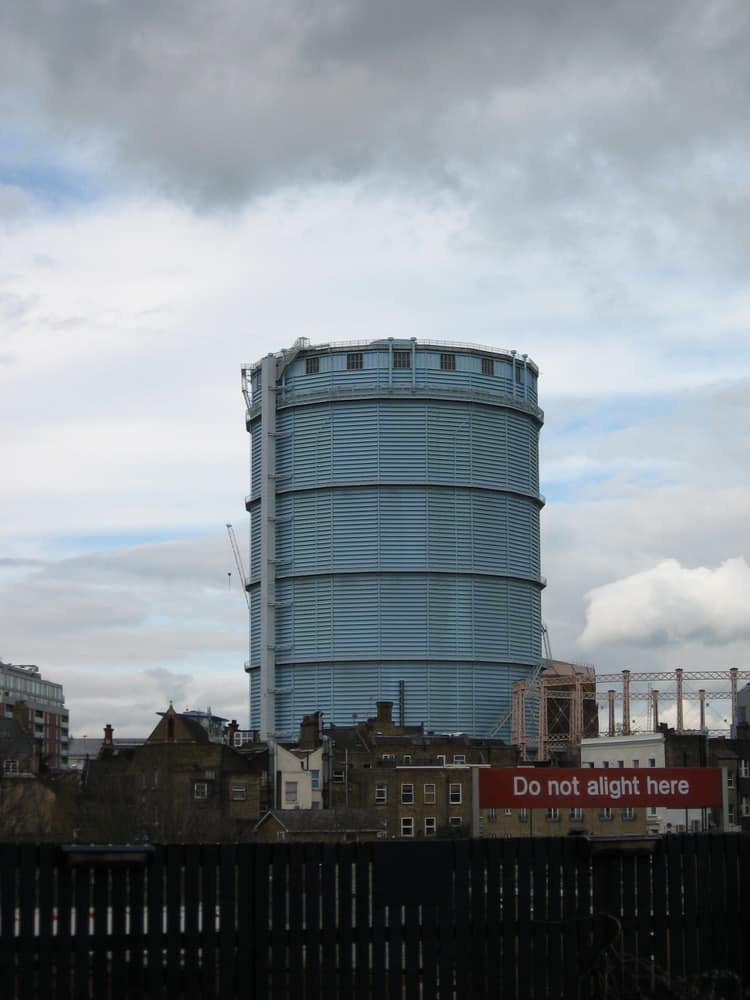



Comments
I read your article in the ebook format and enjoyed it immensely. I found myself noting the names of other artists you mentioned so that I could search them out. And I went looking for ‘Large Bowl 2015’. From your description alone I knew it as soon as I saw it. Thank you for sharing the work of Kirsten Coelho – til now unknown to me but thankfully no longer.